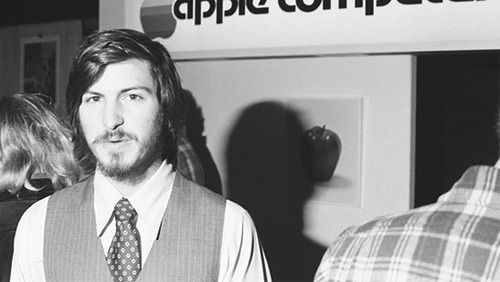Omnipotent Design

When we talk about ‘design’, it’s hard to know what we’re actually talking about. I still don’t really know. But what I’ve come to learn over the past year or so, is that if you want your work to really mean something in the world, which I think is asking a lot for this profession (a lot would be happy to drink beers and pay the bills), you need to have a gorilla grip on the idea of omnipotent design. Design that sets new standards, new rules, and controls the whole experience of whatever people are interacting with or talking about. To take that many steps back and look at something with this macro-vision is obviously not easy. Off the top of my head I could name a few, including one dude who lead a design driven business almost obsessively. A business named Apple Inc, and a guy named Steve Jobs.
I’ll set the scene. A young designer working at Apple in the mid 80’s, is in a situation a lot of young creatives find themselves in. They’re smart, they’re fast, and talented. They churn ideas like Durant drills free throws. But, they don’t get paid much, and there’s a whole heap of wiser, angrier, creative people who could have them fired them at any moment. The only way to move up the food chain is through a process of creative reviews, wherein the creative director (the big dog who has to be across every scrap of work that leaves the agency doors) critiques, and finally, begrudgingly accepts your creative output. Steve Jobs was that guy. He was notoriously picky, and this designer found himself averaging 15,16 rounds of feedback. The ‘creative review’ was more like an adrenaline filled guessing game; What’s Steve thinking of today?
After three months, with a sweaty whiff of desperation, he brought in work by Milton Glaser, Woody Pirtle, Ivan Chermayeff (legends of modern graphic design). He called a meeting, and had Steve flick through the folios. “This is great design isn’t it?” Steve shook his head. “Nah.” He turned to him. “Why do you think this is good?” Questions like this were commonplace working under Steve; Even if you had just designed a masterpiece, you still had to sell it. You had to be surgically attached to your work, ready to die for it.
The designer quickly listed the quality of the work, craftmanship, insight: dot points that convert into awards at any decent AIGA judging panel. “Yeah, that’s good, but what I think is great design is… The Beatles.” (Jobs) paused and thought about. “It’s not the late Beatles, it’s the early Beatles. It’s the raw energy, the verve, the vibrancy of their music, that should be the characteristics and the expression of what the Mac is.“
At the time it just didn’t make sense. What was he talking about? The Beatles? It really just sounded like the usual egotistical creative director talk. But later, years later, long after he had left Apple, and that small computer company conquered a large part of the technology sector, he got it. For Steve, engineers and designers were artisans, and this business they were in was so young, and filled with promise that they could sculpt their ideas into products as beautiful, ugly or powerful as they wanted. Limitless. Or at least the limit was set in the design. Thinking about what other designers were doing at the time and whatever was on trend was like making a coffee with instant. You’ll get a cup of something, but it could be infinitely better if you tinkered around for a bit. The industry was rapidly changing, and design could add life to technology: the artform that truly excited Steve.
So what was good design? It’s something that’s relative to what you know. If you’re fast, ship and are early to the category, you get to set your own rules. Approach every brief this way. Can we reshape the conversation?. Can we reset something that has started to stagnate and slow down? Can we set new standards, new rules? Why not? Omnipotent design says: you “design the inside, the outside and everything around it. If you can, design what is being said about it.”
Quotes borrowed liberally from Clement Mok’s on Design Observer (worth a listen!)